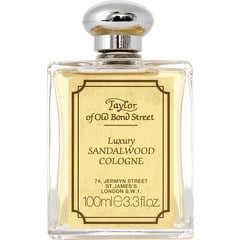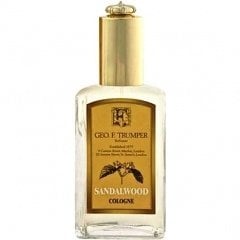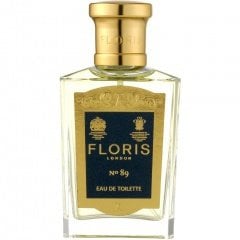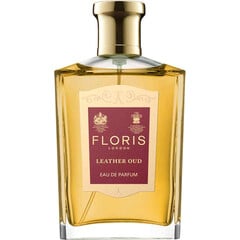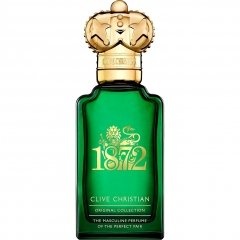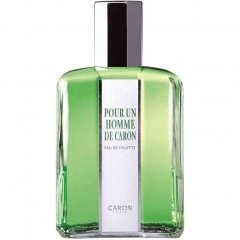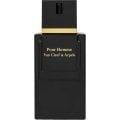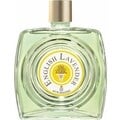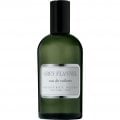
Konsalik
Reviews
Filter & sort
Translated
Show original
The wooden chameleon, or: The fragrant depth of the years
After the misleadingly named - albeit very good! - Sandalwood Cologne by Geo F. Trumper I felt the need to test the namesake of another old house for shaving supplies and accompanying fragrances from England. It should be one of the strangest encounters with a fragrance ever.
At first, I was simply prosaically delighted! This Sandalwood Cologne was now indeed what the name promises: a simple, slightly antiquated dual sound to my taste, which, with the successful interplay of barbershop sandalwood and (also associated with sandalwood products) upper barbershop soap, simply seemed to fill a functional gap in my shelf. Wow! Soon a whole bottle had to go into the house. At that price!
A few days later. Shortly before leaving the house, I dabbed the neck and back of my hand and did not think about the scent any further; it had already been deciphered and the tenor of the review (eight points, good, straight functional scent of classic Façon) was already clear. At some point in the morning, the first casual scent on my hand. Strange! It smells... somehow different, darker, almost sweet. Well, it will be me. Or the surroundings. I just can't concentrate. You know how it is
Then the third time: Already a little different again! This time nutty and slightly bitter. How can this simple dual sound (which it basically remains the same the whole time!) be so diverse? It can hardly be because of the amazingly long list of ingredients, especially since I can't isolate jasmine, violet, rosemary or any of the other listed notes - or is it because of that? Of all things, under the Trumper fragrance of the same name that I last discussed, I find a clue that could provide the key to this fragrance experience, which is becoming more and more mysterious every time:
In his review, the knowledgeable user DasguteLeben spoke of real Mysore sandalwood and how this fragrance is virtually untraceable today. He was able to report that the expensive noble raw material had an "indescribable milky-creamy-woody, sour-sour, sweet-spicy floral quality". Strange!
Combine, combine... My guess is that the gentlemen at Taylor of Old Bond Street have tried to recreate this chameleon, which is said to represent Mysore sandalwood, with the help of the many scents listed (some of them even under collective names). Because apart from the general woodiness and soapiness, the only connecting element of all my six or seven test runs so far has remained the incredibly iridescent, literally (or metaphorically) multifaceted nature of this scent. As if the wood and soap were constantly iridescing slightly - like insect wings or the contents of a broken geode in twilight. But it doesn't matter whether Sandalwood Cologne presents itself slightly sweaty and sour like the other day or discreetly copper-metallic and creamy at the same time like today: It always remains elegant, simple in expression and controlled, but at the same time stimulates the imagination, like a good storyteller in a wing chair. In this fragrance, which is very simple on superficial observation, there are indeed so many whispered quotations, loving reminiscences of an undefined past, that one can get the feeling that every millilitre contains ancient information, perfume remnants dried on fabrics have been preserved, and when applying the perfume, the long-faded hand glides through the sleeve of the coat again after a hundred years, the forgotten scarf is thrown over the shoulder once more in order to reactivate the fragrances from the depths of the years for a few hours.
I don't know what Mysore smells like, but I want it to be like this scent.
At first, I was simply prosaically delighted! This Sandalwood Cologne was now indeed what the name promises: a simple, slightly antiquated dual sound to my taste, which, with the successful interplay of barbershop sandalwood and (also associated with sandalwood products) upper barbershop soap, simply seemed to fill a functional gap in my shelf. Wow! Soon a whole bottle had to go into the house. At that price!
A few days later. Shortly before leaving the house, I dabbed the neck and back of my hand and did not think about the scent any further; it had already been deciphered and the tenor of the review (eight points, good, straight functional scent of classic Façon) was already clear. At some point in the morning, the first casual scent on my hand. Strange! It smells... somehow different, darker, almost sweet. Well, it will be me. Or the surroundings. I just can't concentrate. You know how it is
Then the third time: Already a little different again! This time nutty and slightly bitter. How can this simple dual sound (which it basically remains the same the whole time!) be so diverse? It can hardly be because of the amazingly long list of ingredients, especially since I can't isolate jasmine, violet, rosemary or any of the other listed notes - or is it because of that? Of all things, under the Trumper fragrance of the same name that I last discussed, I find a clue that could provide the key to this fragrance experience, which is becoming more and more mysterious every time:
In his review, the knowledgeable user DasguteLeben spoke of real Mysore sandalwood and how this fragrance is virtually untraceable today. He was able to report that the expensive noble raw material had an "indescribable milky-creamy-woody, sour-sour, sweet-spicy floral quality". Strange!
Combine, combine... My guess is that the gentlemen at Taylor of Old Bond Street have tried to recreate this chameleon, which is said to represent Mysore sandalwood, with the help of the many scents listed (some of them even under collective names). Because apart from the general woodiness and soapiness, the only connecting element of all my six or seven test runs so far has remained the incredibly iridescent, literally (or metaphorically) multifaceted nature of this scent. As if the wood and soap were constantly iridescing slightly - like insect wings or the contents of a broken geode in twilight. But it doesn't matter whether Sandalwood Cologne presents itself slightly sweaty and sour like the other day or discreetly copper-metallic and creamy at the same time like today: It always remains elegant, simple in expression and controlled, but at the same time stimulates the imagination, like a good storyteller in a wing chair. In this fragrance, which is very simple on superficial observation, there are indeed so many whispered quotations, loving reminiscences of an undefined past, that one can get the feeling that every millilitre contains ancient information, perfume remnants dried on fabrics have been preserved, and when applying the perfume, the long-faded hand glides through the sleeve of the coat again after a hundred years, the forgotten scarf is thrown over the shoulder once more in order to reactivate the fragrances from the depths of the years for a few hours.
I don't know what Mysore smells like, but I want it to be like this scent.
15 Comments
Translated
Show original
In dubio per Geo
Yes, Sandalwood Cologne can indeed be considered at least as a close relative of Chanel's Égoïste, which is, in my opinion, the last great men's fragrance by Chanel. The darker-fruity, more elegant development of the powerhouse theme of the eighties, which unfolded between Obsession (1986) and Opium pour Homme EdP (1995), can also be found in this late replica from 2002, a disdainful quasi-duper of a mass-selling, room-filling French worms ? And something like this from a time-honoured institution of the British perfume industry of all places? Surely one shouldn't just get angry at the misleading naming, should one? So has the verdict been reached yet?
Make way! For one thing, even the older and oldest fragrances from Trumper are by no means all silent peddlers. For example, if you put on two hollow hands of the unique caraway monster Astor, you would be no less a topic of conversation than Égoïste after four sprays. On the other hand, Sandalwood Cologne smells much more angular than the model for all its similarity: the individual components are not so seamlessly French, but are more disparately connected in beautiful British straightforwardness: fruit, cinnamon, clove, woods, vanilla. This discreet rusticity is quite typical for Trumper and I like it here very much, especially since the individual notes thus unfold even more power than the original currently does. At the moment? This leads to another point that speaks for Sandalwood Cologne. The Geo F. Trumper brand is known for its remarkable resistance to reformulation. Conversely, this means that Sandalwood Cologne may bring the buyer closer to the original formulation of Égoïste than its current version. And even though I don't have a vintage bottling to hand: The current Égoïste is actually more subdued overall than his British cousin. The latter, at least Mrs. Konsalik says, burns away the (few! delightful!) nose hairs on two meters even with moderate spraying behaviour.
Still not convinced? Then I would like to add that Trumper is perhaps the only house in the world that is legitimized to build such a replica. After all, the first dark-fruity, spicy men's perfume ever (we're talking about Eucris, of course) comes - as far as I know - from Trumper's stable! So maybe it's fair to say that Sandalwood Cologne represents the royalties Trumper is paying out after Chanel's successful variation on a 1912 theme. Well, maybe a bit too far-fetched. Then perhaps finally the price. I know people don't like to talk about it, but Chanel maintains its nimbus of exclusivity not least through a stable, tight pricing policy. Special offers? Hardly any, if at all. Sandalwood Cologne, on the other hand, I bought for comparatively little money.
I, for one, plead for acquittal.
Make way! For one thing, even the older and oldest fragrances from Trumper are by no means all silent peddlers. For example, if you put on two hollow hands of the unique caraway monster Astor, you would be no less a topic of conversation than Égoïste after four sprays. On the other hand, Sandalwood Cologne smells much more angular than the model for all its similarity: the individual components are not so seamlessly French, but are more disparately connected in beautiful British straightforwardness: fruit, cinnamon, clove, woods, vanilla. This discreet rusticity is quite typical for Trumper and I like it here very much, especially since the individual notes thus unfold even more power than the original currently does. At the moment? This leads to another point that speaks for Sandalwood Cologne. The Geo F. Trumper brand is known for its remarkable resistance to reformulation. Conversely, this means that Sandalwood Cologne may bring the buyer closer to the original formulation of Égoïste than its current version. And even though I don't have a vintage bottling to hand: The current Égoïste is actually more subdued overall than his British cousin. The latter, at least Mrs. Konsalik says, burns away the (few! delightful!) nose hairs on two meters even with moderate spraying behaviour.
Still not convinced? Then I would like to add that Trumper is perhaps the only house in the world that is legitimized to build such a replica. After all, the first dark-fruity, spicy men's perfume ever (we're talking about Eucris, of course) comes - as far as I know - from Trumper's stable! So maybe it's fair to say that Sandalwood Cologne represents the royalties Trumper is paying out after Chanel's successful variation on a 1912 theme. Well, maybe a bit too far-fetched. Then perhaps finally the price. I know people don't like to talk about it, but Chanel maintains its nimbus of exclusivity not least through a stable, tight pricing policy. Special offers? Hardly any, if at all. Sandalwood Cologne, on the other hand, I bought for comparatively little money.
I, for one, plead for acquittal.
16 Comments
Translated
Show original
On a creamy mission
Fougères lend themselves to evoking comparatively straightforward notions of masculinity and draw from this, at least in the Western hemisphere, their unbroken popularity; the typical components are usually easy to classify - even without analysis, purely from primary experience. Chypres, on the other hand, are not infrequently enigmatic, challengingly unfamiliar, especially for men, as the often densely interwoven flower walls are not easy to separate. (Deceptive) conclusion: pompous-cloudy woman stuff. Yet, as one can learn, floral notes are among the most complex in the entire perfume cosmos and, as is well known, they go a long way, right up to "dirty" and "spicy". A wide field, therefore, which can be used to refine the nose (and thus also the taste judgement - oh yes!). But where can the half-willed Hagestolz, wholly devoted to the classical Colognes and Fougères, take his first steps into the world of orderly opulence (for this could be approximately the definition of a successful gentlemen's chypre)?
A classic English perfume is a very good starting point for explorations in this respect, as its essential components can be assumed to be better known than ever before and its basic structure can therefore be quickly deciphered. Thus, there is still room to isolate and capture the "other" in a descriptive way. The familiar framework only allows the unusual to emerge more clearly.
This is where Floris's old perennial "No. 89" from the fifties comes in and performs an elegant triple jump under the nose of the homely Hagestolz: starting from the traditional citrus-lavender barbershop, the second jump bridges the gap to the bitter orange, which clearly withdraws to the skin: astringent, bitter and slightly waxy at the same time, thus creating a gently rising ramp to the floral heart of this fragrance. The dear user Yatagan speaks of a hairspray note, but I find it, roughly speaking, creamy and cosmetic without being feminine (although No. 89 should certainly also be attractive to women!). Rather a distinguished, almost courteous, "melting" blossom core inside, never overflowing or even getting lost, but always brought into position by the triad of citric, lavender and wood, established as the masculine triad par excellence. It is easy to understand why Ian Flemming wanted to see or smell this very fragrance (besides Trumpers Eucris) on Bond: There is a glowing core that is receptive to amorousness, but in the end the mission is in the foreground! In terms of expression, this fragrance is not dissimilar to Creeds Bois du Portugal, but it is far more expressive and "narrative". What "such a few flowers" can do.
Finally, we send the technical notes for "M" to headquarters: No. 89 has mediocre, but by no means weak durability and sillage. Just the way you want it. By the way, the comment of the user OhdeBerlin almost makes me happy to applaud only the pathetic, reformulated shrinkage of this really famous fragrance. Knowing the lost original composition would probably plunge me into a depressive mood.
A classic English perfume is a very good starting point for explorations in this respect, as its essential components can be assumed to be better known than ever before and its basic structure can therefore be quickly deciphered. Thus, there is still room to isolate and capture the "other" in a descriptive way. The familiar framework only allows the unusual to emerge more clearly.
This is where Floris's old perennial "No. 89" from the fifties comes in and performs an elegant triple jump under the nose of the homely Hagestolz: starting from the traditional citrus-lavender barbershop, the second jump bridges the gap to the bitter orange, which clearly withdraws to the skin: astringent, bitter and slightly waxy at the same time, thus creating a gently rising ramp to the floral heart of this fragrance. The dear user Yatagan speaks of a hairspray note, but I find it, roughly speaking, creamy and cosmetic without being feminine (although No. 89 should certainly also be attractive to women!). Rather a distinguished, almost courteous, "melting" blossom core inside, never overflowing or even getting lost, but always brought into position by the triad of citric, lavender and wood, established as the masculine triad par excellence. It is easy to understand why Ian Flemming wanted to see or smell this very fragrance (besides Trumpers Eucris) on Bond: There is a glowing core that is receptive to amorousness, but in the end the mission is in the foreground! In terms of expression, this fragrance is not dissimilar to Creeds Bois du Portugal, but it is far more expressive and "narrative". What "such a few flowers" can do.
Finally, we send the technical notes for "M" to headquarters: No. 89 has mediocre, but by no means weak durability and sillage. Just the way you want it. By the way, the comment of the user OhdeBerlin almost makes me happy to applaud only the pathetic, reformulated shrinkage of this really famous fragrance. Knowing the lost original composition would probably plunge me into a depressive mood.
11 Comments
Translated
Show original
The toils of the stage
Similar to Penhaligon's, Floris is one of those houses where you hardly notice when perfumed silverware is brought to the market to be placed on the dining table from the proceeds of minimalist chique, where design is everything but substance is nothing. The suspicion is not unfounded, since Penhaligon's has proven that treading water in an attempt to remain relevant produces an unmanageable number of sometimes really questionable scents. And what more could one wish for in an old British house (whether fashion, cars or perfumes) than restraint and prudence, just to be able to make a confident bull's eye at the right time? After all, the cousins on the other side of the Atlantic are already shooting with cannons on sparrows. But now down with the eyebrow and bravely sprayed.
The top note pulls out all the stops and adds a glockenspiel and a harp: Leather Oud" is bright and radiant, yet full and round at the same time, and delights the reviewer with a syrupy, slightly "limy" herbal lustre (e.g. Ricola dissolved in retsina) on the one hand, and the balance between medicated, woody and discreetly fecally clean (artificial) oud on the other.
The leather that gives the fragrance its name is found at best associatively, but not as an actual note, as modern fragrances unfortunately so often do with "leather" in their name. Here Floris remains true to tradition: leather scent is not recreated true to nature, but only conjured up through the back door. Very pleasing!
After the top note has faded away, the composer as well as the orchestra unfortunately quickly runs out of breath. One of the previous speakers attested Leather Oud a honey character (actually strange, if the sister scent from the same house is called Honey Oud of all things...) - but I found it a bit more prosaic than "Grafschafter Goldsaft-Note", with a slightly medicated woodiness. That doesn't smell bad in itself, only the knot sinks too clearly after the triumphant overture: You drag yourself through the stage a little tough and instead of real bee honey the field cook can only serve with substitute products.
The basis is reconciliatory: the existing is pleasantly ambry without sticking together. So far, so good. But has this institution of Anglo-Saxon perfumery succeeded in making the digression towards the oud?
To be honest, I struggled a little through that review. Oud or contemporary woodiness as a whole seems to be reluctant to fit into a classic European fragrance concept. Whether AdP's "Colonia Oud", "Marylebone Wood" by Penhaligon's or even this attempt: Somehow the picture remains a bit expressionless despite all the power and opulence, intermediate tones are covered up. Yes, Leather Oud is definitely one of the more distinguished oudlers I've had the pleasure of testing so far, but it looks a bit as if the distinguished great uncle had bought a rattling BMW in his old days to impress the village youth. It's a little touching, but somehow you smile a little pitiful.
The top note pulls out all the stops and adds a glockenspiel and a harp: Leather Oud" is bright and radiant, yet full and round at the same time, and delights the reviewer with a syrupy, slightly "limy" herbal lustre (e.g. Ricola dissolved in retsina) on the one hand, and the balance between medicated, woody and discreetly fecally clean (artificial) oud on the other.
The leather that gives the fragrance its name is found at best associatively, but not as an actual note, as modern fragrances unfortunately so often do with "leather" in their name. Here Floris remains true to tradition: leather scent is not recreated true to nature, but only conjured up through the back door. Very pleasing!
After the top note has faded away, the composer as well as the orchestra unfortunately quickly runs out of breath. One of the previous speakers attested Leather Oud a honey character (actually strange, if the sister scent from the same house is called Honey Oud of all things...) - but I found it a bit more prosaic than "Grafschafter Goldsaft-Note", with a slightly medicated woodiness. That doesn't smell bad in itself, only the knot sinks too clearly after the triumphant overture: You drag yourself through the stage a little tough and instead of real bee honey the field cook can only serve with substitute products.
The basis is reconciliatory: the existing is pleasantly ambry without sticking together. So far, so good. But has this institution of Anglo-Saxon perfumery succeeded in making the digression towards the oud?
To be honest, I struggled a little through that review. Oud or contemporary woodiness as a whole seems to be reluctant to fit into a classic European fragrance concept. Whether AdP's "Colonia Oud", "Marylebone Wood" by Penhaligon's or even this attempt: Somehow the picture remains a bit expressionless despite all the power and opulence, intermediate tones are covered up. Yes, Leather Oud is definitely one of the more distinguished oudlers I've had the pleasure of testing so far, but it looks a bit as if the distinguished great uncle had bought a rattling BMW in his old days to impress the village youth. It's a little touching, but somehow you smile a little pitiful.
9 Comments
Translated
Show original
A transparent still life.
Two hearts beat in my chest since this test, when I think of the Clive Cristian brand. Because in and of itself I can't help but find everything about this brand repulsive: The vulgar, almost infantile design of the flacons, the pseudo-aristocratic posturing together with clumsy historicising symbolism, elitist pricing policies - all as if they were tailored to the caricature of an oligarchic soup from Odessa as a target group and thus almost as embarrassing as the EdT by Von Siffstopf, uh, Sierstorpff, which the co-parfumo FvSpee so artfully dissected, weighed and found too light in its entire essence.
Because in fact: Anyone who has deep sympathies and even a rudimentary understanding of a quite conceived aristocratic element in this world (which does not necessarily have to see itself realized in a monarchy!) can hardly help but develop something like an arrogant reserve, in the sense of "not wanting to know", in front of the strained, upstart aura of such and similar brands.
But please, have the honour, some months ago I received about five millilitres as a generous addition to a souk order. Off to the back shelf. A-PÜH! Your reviewing wannabe aristocrat doesn't want to have anything to do with the other wannabe aristocrats. Hm.
The other day then the perfume interview with Geza Schön read. Everything I have smelled of him so far has actually pleased me. Oh, the 1872 is his? Double Hm. Well, here we go
First of all: Even if 1872 for Men does not work well at all on me, I consider it to be an extremely skilfully composed fragrance, which, for example, comes across much more conclusively on paper than on my skin, even though the description is comparable. But what is important to me, I am pragmatic, "on the spot". On my nose, after a resounding "Everything with double cheese" overture, an inharmonious, greenish peach with a coating reminiscent of heavily sweetened peppermint tea is hitting me. Beneath this lurks a strangely attached quasi-chypre accord, which makes the fragrance appear fresh and musty-patinated at the same time. I actually found this aspect interesting and amazing. You have to create it first.
At the same time, this sumptuous, green fruit-flower-wood cocktail bursts with transparency; you can tell that Mr. Schön was really allowed to reach for the top shelves during the creative process. However, this natural, transparent high quality obviously leads to a low tolerance regarding the skin chemistry of the wearer (1872 for Men is uni!). Mrs. Konsalik also explained with the corners of her mouth pulled down: "You can see what he wants, but on you it does not succeed at all"
What are you to do? My redneck blood just keeps on breaking. I'll read on in my Metternich biography - in 1872 everything was already barely salvageable brushed to riot...
Because in fact: Anyone who has deep sympathies and even a rudimentary understanding of a quite conceived aristocratic element in this world (which does not necessarily have to see itself realized in a monarchy!) can hardly help but develop something like an arrogant reserve, in the sense of "not wanting to know", in front of the strained, upstart aura of such and similar brands.
But please, have the honour, some months ago I received about five millilitres as a generous addition to a souk order. Off to the back shelf. A-PÜH! Your reviewing wannabe aristocrat doesn't want to have anything to do with the other wannabe aristocrats. Hm.
The other day then the perfume interview with Geza Schön read. Everything I have smelled of him so far has actually pleased me. Oh, the 1872 is his? Double Hm. Well, here we go
First of all: Even if 1872 for Men does not work well at all on me, I consider it to be an extremely skilfully composed fragrance, which, for example, comes across much more conclusively on paper than on my skin, even though the description is comparable. But what is important to me, I am pragmatic, "on the spot". On my nose, after a resounding "Everything with double cheese" overture, an inharmonious, greenish peach with a coating reminiscent of heavily sweetened peppermint tea is hitting me. Beneath this lurks a strangely attached quasi-chypre accord, which makes the fragrance appear fresh and musty-patinated at the same time. I actually found this aspect interesting and amazing. You have to create it first.
At the same time, this sumptuous, green fruit-flower-wood cocktail bursts with transparency; you can tell that Mr. Schön was really allowed to reach for the top shelves during the creative process. However, this natural, transparent high quality obviously leads to a low tolerance regarding the skin chemistry of the wearer (1872 for Men is uni!). Mrs. Konsalik also explained with the corners of her mouth pulled down: "You can see what he wants, but on you it does not succeed at all"
What are you to do? My redneck blood just keeps on breaking. I'll read on in my Metternich biography - in 1872 everything was already barely salvageable brushed to riot...
14 Comments

 Konsalik
Konsalik